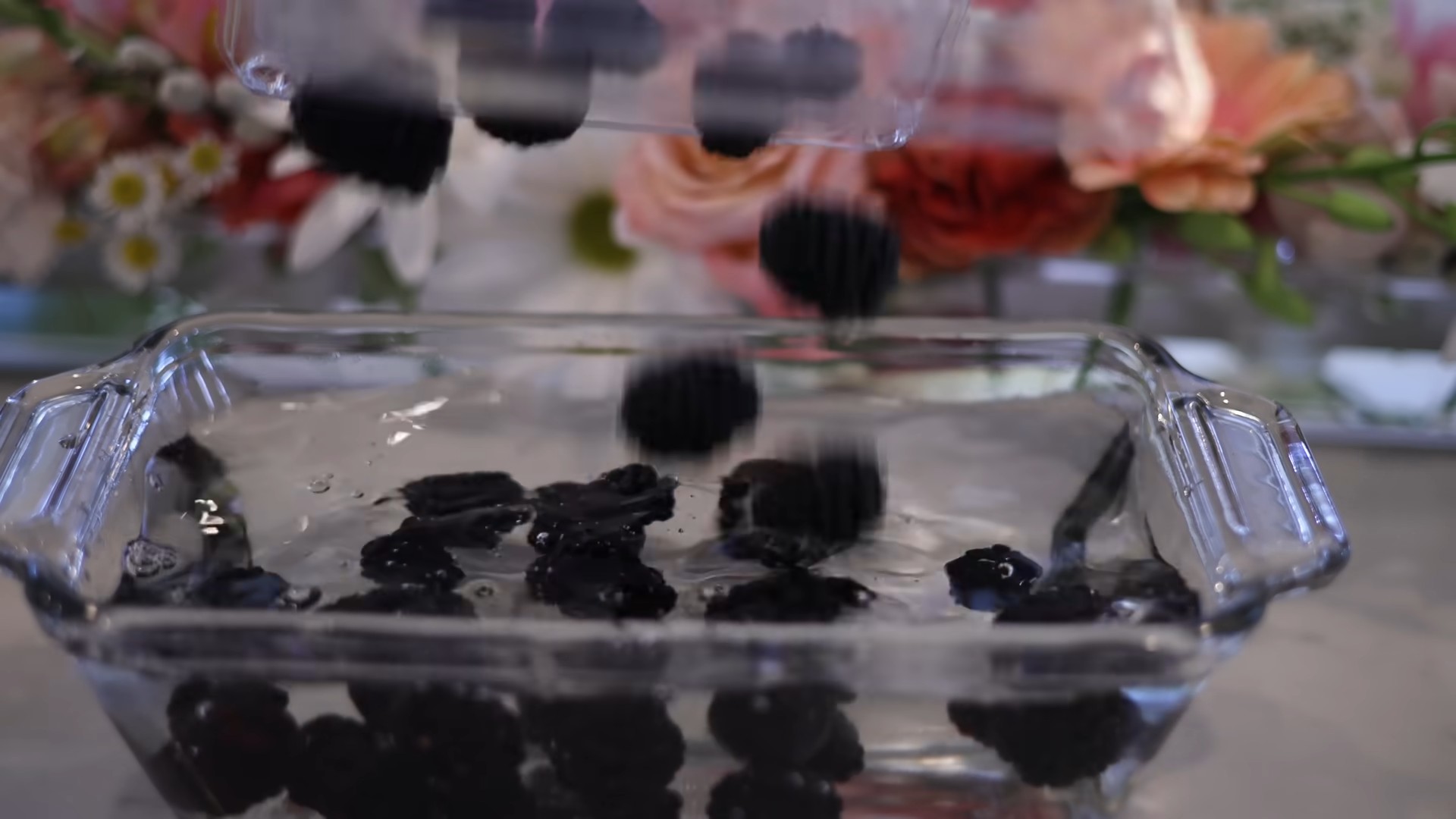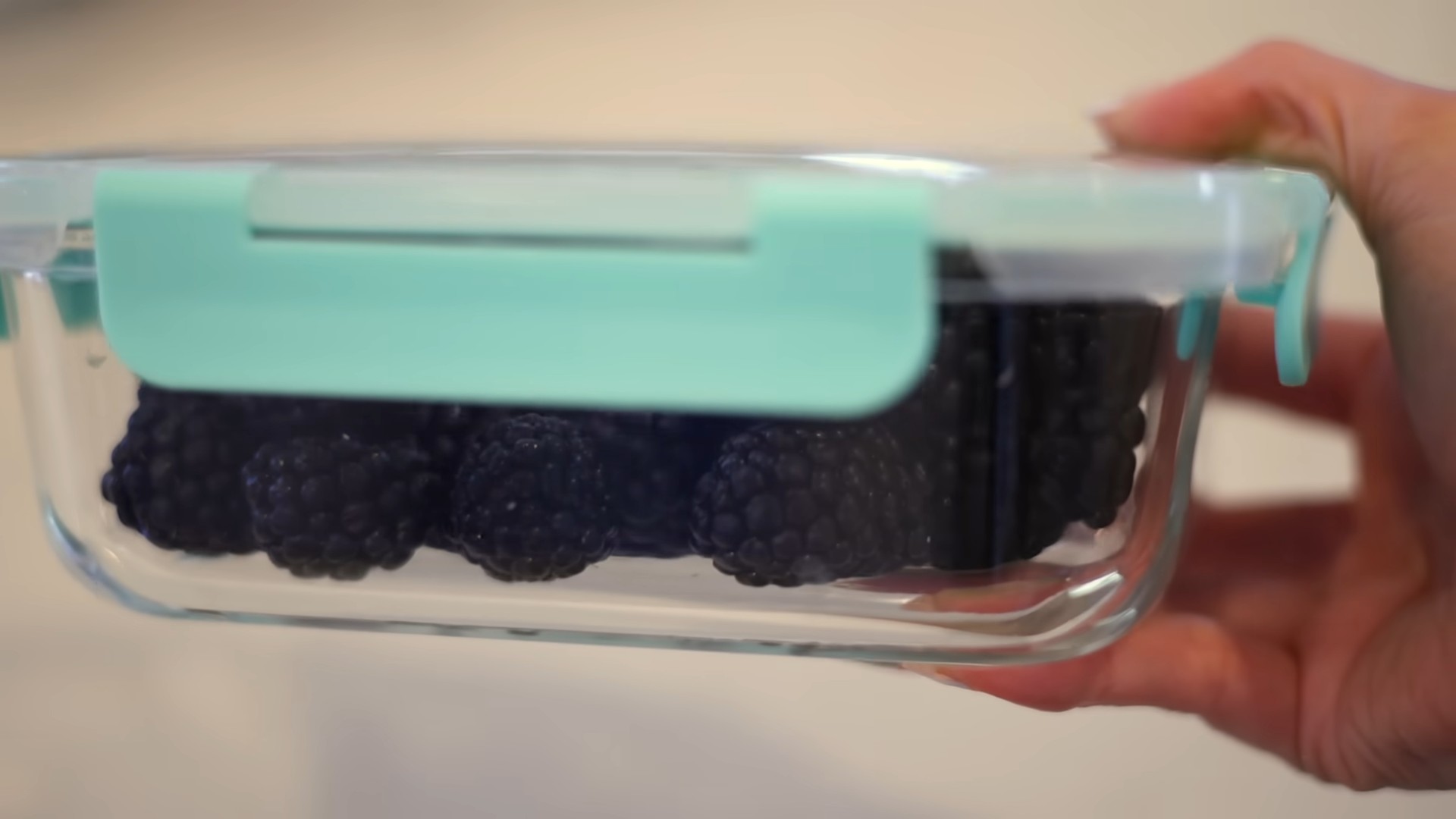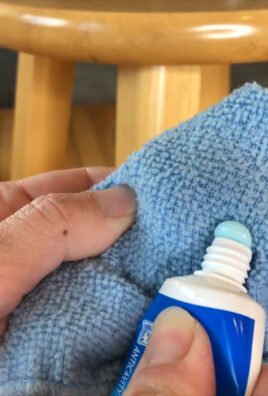Vinegar fruit wash DIY: Are you tired of biting into a seemingly perfect apple, only to be met with a waxy residue or the lingering taste of pesticides? I know I am! For generations, we’ve relied on simple water rinses, but let’s be honest, that just doesn’t cut it anymore. In a world where our food travels miles and is treated with various substances, ensuring a truly clean and safe eating experience requires a little extra effort.
The practice of washing produce dates back centuries, evolving from simple river rinses to the modern-day concerns about chemical residues. While our ancestors might have worried about dirt and insects, we face a new set of challenges. That’s where this vinegar fruit wash DIY comes in! It’s a simple, effective, and budget-friendly way to remove unwanted coatings and potential contaminants from your fruits and vegetables.
This DIY trick is essential because it empowers you to take control of your food’s cleanliness. You’ll gain peace of mind knowing you’re providing yourself and your family with the freshest, safest produce possible. Plus, it’s incredibly easy to make! So, ditch the store-bought washes filled with questionable ingredients and let’s dive into creating your own powerful, natural fruit wash using the magic of vinegar. Trust me, your taste buds (and your health) will thank you!

DIY Fruit and Veggie Wash: A Simple, Safe, and Effective Solution
Hey everyone! I’m always looking for ways to reduce chemicals in my home, especially when it comes to the food I feed my family. Store-bought fruit and veggie washes can be pricey and sometimes contain ingredients I’m not thrilled about. That’s why I started making my own DIY fruit and veggie wash using vinegar, and I’m so excited to share the recipe and process with you! It’s incredibly easy, cost-effective, and gives me peace of mind knowing exactly what’s going on my produce.
Why Make Your Own Fruit and Veggie Wash?
Before we dive into the how-to, let’s talk about why you might want to ditch the store-bought stuff and embrace the DIY route.
* Cost-Effective: Vinegar is super cheap! You’ll save a significant amount of money compared to buying commercial washes regularly.
* Natural Ingredients: You control exactly what goes into your wash. No mystery chemicals or artificial fragrances.
* Effective Cleaning: Vinegar is a natural disinfectant and helps remove dirt, pesticides, and wax from your produce.
* Environmentally Friendly: Less plastic waste from store-bought bottles!
* Peace of Mind: Knowing you’re providing your family with the cleanest possible fruits and vegetables is priceless.
What You’ll Need
Okay, let’s gather our supplies. This is a pretty short list, which is one of the things I love about this DIY project!
* White Vinegar: This is the star of the show! I use plain white vinegar, but you could experiment with apple cider vinegar if you prefer (though it might impart a slight flavor).
* Water: Tap water is perfectly fine.
* Spray Bottle: A clean, empty spray bottle is essential for easy application. I recommend a dark-colored bottle to protect the mixture from light, but it’s not strictly necessary.
* Large Bowl or Sink: For soaking your produce.
* Optional: Essential Oils: A few drops of lemon, grapefruit, or tea tree oil can add a pleasant scent and boost the cleaning power. I usually add lemon oil for its fresh scent and antibacterial properties.
* Optional: Baking Soda: Adding a tablespoon of baking soda to the soaking solution can help remove stubborn dirt and grime.
The Recipe: Two Ways to Wash
I’m going to give you two options for using this DIY wash: a spray method and a soaking method. Both are effective, but I tend to use the spray method for fruits and veggies with thinner skins (like berries) and the soaking method for those with thicker skins (like apples and potatoes).
Method 1: The Spray Method
This is my go-to for a quick and easy clean.
1. Prepare the Spray Solution: In your spray bottle, combine 1 part white vinegar with 3 parts water. For example, if you’re using a 16-ounce spray bottle, you’d use 4 ounces of vinegar and 12 ounces of water.
2. Add Essential Oils (Optional): If you’re using essential oils, add 5-10 drops to the spray bottle.
3. Shake Well: Make sure the vinegar and water (and essential oils, if using) are thoroughly mixed.
4. Spray Your Produce: Generously spray the fruit or vegetable with the vinegar solution, making sure to coat the entire surface.
5. Let it Sit: Allow the solution to sit on the produce for about 30 seconds to 1 minute. This gives the vinegar time to work its magic.
6. Rinse Thoroughly: Rinse the fruit or vegetable under cool, running water for at least 30 seconds. Be sure to scrub gently with your hands to remove any remaining dirt or residue.
7. Dry and Enjoy: Pat the fruit or vegetable dry with a clean towel or paper towel before eating or storing.
Method 2: The Soaking Method
This method is great for larger quantities of produce or for items that are particularly dirty.
1. Prepare the Soaking Solution: Fill a large bowl or your clean sink with cool water.
2. Add Vinegar: Add 1/2 cup of white vinegar to the water.
3. Add Baking Soda (Optional): If you’re using baking soda, add 1 tablespoon to the water. It might fizz a bit, which is perfectly normal.
4. Add Essential Oils (Optional): If you’re using essential oils, add 5-10 drops to the water.
5. Submerge Your Produce: Place the fruits or vegetables in the water, making sure they are fully submerged.
6. Soak: Let the produce soak for 10-15 minutes. This allows the vinegar to loosen dirt and pesticides.
7. Scrub (Optional): If your produce is particularly dirty, you can gently scrub it with a soft brush or your hands while it’s soaking.
8. Rinse Thoroughly: Remove the produce from the soaking solution and rinse it thoroughly under cool, running water.
9. Dry and Enjoy: Pat the fruit or vegetable dry with a clean towel or paper towel before eating or storing.
Tips and Tricks for the Best Results
Here are a few extra tips I’ve learned along the way to make sure your fruit and veggie wash is as effective as possible:
* Don’t Soak Too Long: While soaking is great, don’t leave your produce in the vinegar solution for too long (more than 15 minutes). It can affect the texture and flavor of some fruits and vegetables.
* Use a Soft Brush: For produce with tough skins, like potatoes or carrots, a soft vegetable brush can help remove stubborn dirt.
* Wash Before Storing: I prefer to wash my produce as soon as I get home from the store and then store it in the refrigerator. This helps prevent the spread of bacteria and keeps my fruits and vegetables fresher for longer.
* Dry Thoroughly: Make sure to dry your produce thoroughly after washing. Excess moisture can promote mold growth and shorten the shelf life of your fruits and vegetables.
* Adjust the Vinegar Concentration: If you find that the vinegar smell is too strong, you can reduce the amount of vinegar in the solution. However, keep in mind that a lower concentration may not be as effective at cleaning.
* Test on a Small Area First: If you’re concerned about the vinegar affecting the color or texture of a particular fruit or vegetable, test the solution on a small, inconspicuous area first.
* Use Distilled Water: If your tap water is particularly hard or contains a lot of minerals, you can use distilled water to make your fruit and veggie wash. This will help prevent mineral buildup on your produce.
* Refrigerate the Spray Solution: If you’re making a large batch of the spray solution, you can store it in the refrigerator to help prevent bacterial growth.
* Consider Organic Vinegar: For an even more natural option, use organic white vinegar.
* Wash Berries Gently: Berries are delicate, so be extra gentle when washing them. I usually use the spray method and avoid soaking them for too long.
* Remove Outer Leaves: For leafy greens like lettuce and spinach, remove the outer leaves before washing. These leaves are often the most contaminated.
* Don’t Use Soap: Never use dish soap or other detergents to wash your fruits and vegetables. These products can leave a residue that is difficult to rinse off and can be harmful if ingested.
* Wash Even Organic Produce: Even if you buy organic produce, it’s still important to wash it. Organic produce may not be treated with synthetic pesticides, but it can still be contaminated with dirt, bacteria, and other contaminants.
* Make a Fresh Batch Regularly: I recommend making a fresh batch of your fruit and veggie wash every few weeks to ensure that it’s as effective as possible.
Addressing Common Concerns
I know some people might have a few concerns about using vinegar on their food, so let’s address those:
* Vinegar Smell: Yes, vinegar has a distinct smell, but it dissipates quickly after rinsing. Don’t worry, your fruits and veggies won’t taste like vinegar! The essential oils can also help mask the vinegar scent.
* Acidity: Vinegar is acidic, but the diluted solution is safe for most fruits and vegetables. However, if you have any concerns about a particular type of produce, you can always test it on a small area first.
* Effectiveness: Some people wonder if vinegar is really effective at removing pesticides. Studies have shown that vinegar can help remove certain pesticides from produce, but it’s not a magic bullet. It’s still important to buy organic whenever possible and to wash your produce thoroughly.
Final Thoughts
Making your own fruit and veggie wash is a simple, effective, and affordable way to ensure that you’re providing your family

Conclusion
So, there you have it! This simple, yet incredibly effective, vinegar fruit wash DIY is more than just a cleaning hack; it’s a commitment to your health and well-being. In a world saturated with hidden chemicals and potential contaminants, taking control of what you put into your body is paramount. This DIY method empowers you to do just that, offering a natural and affordable alternative to commercially produced fruit washes that often contain ingredients you can’t even pronounce.
Why is this a must-try? Because it’s easy, economical, and effective. You likely already have the ingredients in your pantry. The process takes mere minutes, and the peace of mind knowing you’ve removed a significant amount of dirt, pesticides, and bacteria from your fruits and vegetables is priceless. Think about the crispness of that apple, the juiciness of that berry, now imagine enjoying them with the added assurance that they’re as clean as possible. That’s the power of this simple DIY.
But the beauty of this method lies in its adaptability. Feel free to experiment with variations to suit your preferences and needs. For a more fragrant wash, add a few drops of your favorite essential oil, such as lemon or grapefruit. These oils not only contribute a pleasant aroma but also possess their own antimicrobial properties. If you’re dealing with particularly stubborn dirt or waxy coatings, consider adding a tablespoon of baking soda to the wash. The gentle abrasion of the baking soda can help loosen debris without damaging the fruit.
Don’t limit this wash to just fruits! It works wonders on vegetables too. Think about leafy greens like lettuce and spinach, which can harbor dirt and insects in their crevices. A quick soak in the vinegar wash can make a world of difference. Root vegetables like carrots and potatoes also benefit from a good wash, removing soil and any lingering residues.
We understand that trying something new can sometimes feel daunting, but we urge you to give this vinegar fruit wash DIY a try. The benefits far outweigh the minimal effort required. It’s a small change that can have a significant impact on your health and the health of your family.
Ready to take the plunge? We’re confident that you’ll be amazed by the results. Once you’ve tried it, we’d love to hear about your experience! Share your thoughts, tips, and variations in the comments below. Did you notice a difference in the taste or texture of your fruits and vegetables? Did you find any particularly effective combinations of ingredients? Your feedback is invaluable and can help others discover the benefits of this simple yet powerful DIY. Let’s create a community of health-conscious individuals who are committed to nourishing their bodies with the cleanest, freshest produce possible. So go ahead, give it a try, and let us know what you think! Your journey to cleaner, healthier eating starts now.
Frequently Asked Questions (FAQ)
What kind of vinegar should I use for the fruit wash?
White distilled vinegar is generally recommended for a fruit wash because it’s inexpensive, readily available, and has a neutral odor. Apple cider vinegar can also be used, but it may impart a slight flavor to the fruit, especially if it’s soaked for an extended period. Avoid using flavored vinegars or cleaning vinegars, as these may contain additives that are not safe for consumption. The key is to use a vinegar that is food-grade and has a relatively low acidity level.
Will the vinegar make my fruit taste like vinegar?
If you use the correct dilution ratio (typically 1 part vinegar to 3 parts water) and rinse the fruit thoroughly after soaking, the vinegar taste should not be noticeable. The brief soak is primarily for cleaning purposes, not for flavoring. If you’re concerned about the taste, you can reduce the soaking time or use a milder vinegar like apple cider vinegar. Always rinse the fruit well under running water after the vinegar wash.
How long should I soak the fruit in the vinegar wash?
A soaking time of 10-15 minutes is generally sufficient to remove dirt, pesticides, and bacteria. For delicate fruits like berries, you may want to reduce the soaking time to 5-10 minutes to prevent them from becoming soggy. For fruits with thicker skins, like apples or oranges, you can soak them for the full 15 minutes. The key is to observe the fruit and adjust the soaking time accordingly.
Can I reuse the vinegar wash?
It’s not recommended to reuse the vinegar wash. After soaking the fruit, the wash will contain dirt, pesticides, and bacteria that have been removed from the produce. Reusing the wash would simply reintroduce these contaminants to other fruits and vegetables. It’s best to discard the wash after each use to ensure optimal cleanliness.
Is this vinegar fruit wash DIY effective against all types of pesticides?
While a vinegar wash can effectively remove many types of pesticides, it may not be effective against all of them. Some pesticides are designed to be systemic, meaning they are absorbed into the plant tissue and cannot be removed by washing. However, the vinegar wash can still remove surface residues and reduce your overall exposure to pesticides. For optimal protection, consider buying organic produce whenever possible.
Can I use this wash on all types of fruits and vegetables?
Yes, this vinegar wash is generally safe for use on all types of fruits and vegetables. However, it’s important to adjust the soaking time and dilution ratio based on the type of produce. Delicate fruits like berries may require a shorter soaking time and a more diluted vinegar solution. Leafy greens should be thoroughly rinsed after soaking to remove any lingering vinegar.
What are some other natural alternatives to vinegar for washing fruits and vegetables?
Besides vinegar, other natural alternatives for washing fruits and vegetables include baking soda, lemon juice, and salt. Baking soda can be used in a similar way to vinegar, by adding a tablespoon to a bowl of water and soaking the produce for 10-15 minutes. Lemon juice can be added to water for a refreshing and antimicrobial wash. Salt can also be used to help remove dirt and bacteria from produce.
How often should I wash my fruits and vegetables?
It’s recommended to wash your fruits and vegetables immediately before you plan to eat or prepare them. Washing them too far in advance can promote spoilage. If you’re storing washed produce, make sure to dry it thoroughly to prevent the growth of mold and bacteria.
Can I use this wash on pre-washed produce?
Even if produce is labeled as “pre-washed,” it’s still a good idea to give it a quick rinse or soak in the vinegar wash. Pre-washing processes may not remove all dirt, pesticides, and bacteria. A quick wash at home can provide an extra layer of protection and ensure that your produce is as clean as possible.
Where can I find more information about food safety and pesticide exposure?
You can find more information about food safety and pesticide exposure from reputable sources such as the Environmental Protection Agency (EPA), the Food and Drug Administration (FDA), and the World Health Organization (WHO). These organizations provide valuable resources and guidelines on how to minimize your exposure to harmful chemicals and ensure the safety of your food.



Leave a Comment